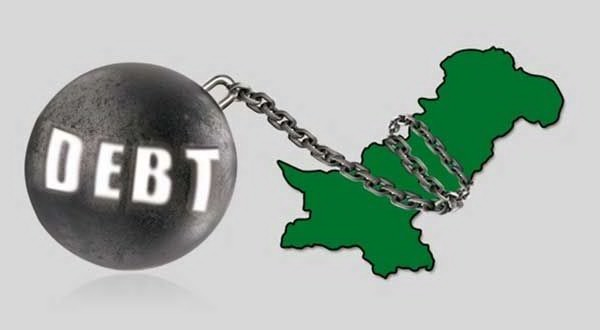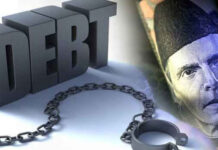
The issue of public debt in Pakistan has received a lot of attention from every concerned quarter. They have been many debates, seminars, and conferences on this subject. For the most part, the debate on public debt has centred on reducing it.
Incurring debt in principle is not bad per se. The key lies in sustainability of public debt. Developed economies with their astronomically high debt stocks have been able to sustainably manage it given their robust economic and institutional fundamentals. United States of America and Japan serve as examples of this.
Pakistani economy does not feature such strong fundamentals. But most importantly recent borrowing strategy by the government has aggravated this situation. Pakistan’s flawed borrowing strategy becomes clear when it is evaluated on two criterions. First, where is the money coming from? Second, where is the money going? Pakistani answer to both these questions raises serious concerns on sustainability of public debt in Pakistan.
Where the debt money comes from?
The government of Pakistan is borrowing heavily from domestic sources i.e. commercial banks. In FY 2000, almost half of the total public debt was from domestic sources. Now this has increased to 70%. Debt from domestic sources is more expensive than from external sources like International Financial Institutions (the fact that borrowing from such institutions involve stern conditions is a different debate altogether).
Based on the latest available data, interest rate on domestic loan was 11.3% in 2014 while interest rate on external debt was only 2.1% for the same year. Pakistani economy which is growing at a rate of 4-5% per year may encounter problem servicing domestic debt at an interest rate of 11.3%.
Apart from being expensive, payments will be due on almost half of the domestic debt within a year. While only 11 percent of the external debt will be due within a year. So Pakistan has to pay off the costly debt within short intervals of time. This fact has major implications for the Pakistani economy. In order to make room for high debt servicing, the government has to compromise spending on social sectors like education and health. Pakistan’s performance in health and education is already unpromising.
But these are not the only issues associated with high domestic borrowing. Over-reliance on domestic debt reduces the amount of credit available to private sector and renders the leftover credit expensive. Private sector which generates employment and is the lifeline of any economy is deprived of an essential opportunity to expand itself.
Issues are also present in external borrowing by the government. Since coming into power, the PML-N government has borrowed $655 million from Dubai-based Noor Bank at interest rate ranging from 4.1% to 4.71%. These are non-traditional sources of borrowing where terms of engagement are not transparent. Unavailability of this information can compromise parliamentary oversight on matters of public debt.
where the debt money goes?
Most of the borrowed money in Pakistan is used to build up foreign exchange reserves or used as a budgetary cushion by the government. Quite recently, the State Bank of Pakistan has borrowed $3.93 billion to bolster foreign reserves.
Pakistan is forced to undertake this practice since it earns less foreign exchange through exports than it has to spend on its imports. In addition to this, in order to maintain the value of rupee, Pakistan needs dollars to effectively intervene in the foreign exchange market. Dollar stability is mostly viewed in Pakistan as a symbol of political achievement. So any incumbent government tries to keep it under control for political gains.
Such policy choices are diverting borrowed money from development sectors such as health and education. Spending on these areas can improve Pakistan’s debt carrying capacity in the long-run. But the current regime of spending most of the debt money on non-development sectors would induce even more borrowing in the future to pay off previously contracted debt.
Pakistan’s borrowing strategy which is dominated by excessive domestic borrowing and obsession with building foreign exchange reserves may render its public debt stocks unsustainable. It will hurt both private and development sectors. On top of that, a defective debt strategy has the potential to impair the policy space available to the policy makers because in some cases the creditor may steer the helms of the economy in order to ensure smooth repayments. The $6.6 billion Extended Fund Facility of International Monetary Fund (IMF) that Pakistan undertook in 2013 included various restrictions on the Government of Pakistan in terms of domestic policy choices.
There is both good debt and bad debt. Unfortunately, policy choices in Pakistan are relying more on bad debt. Such policy choices are a product of political ambitions which are most of the times oblivious of the tenets of sound economics.






